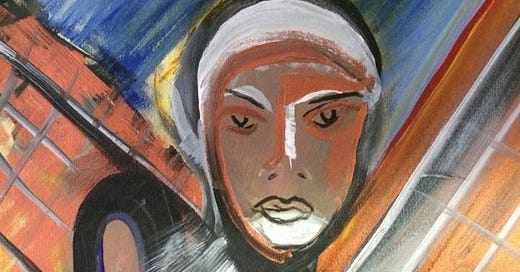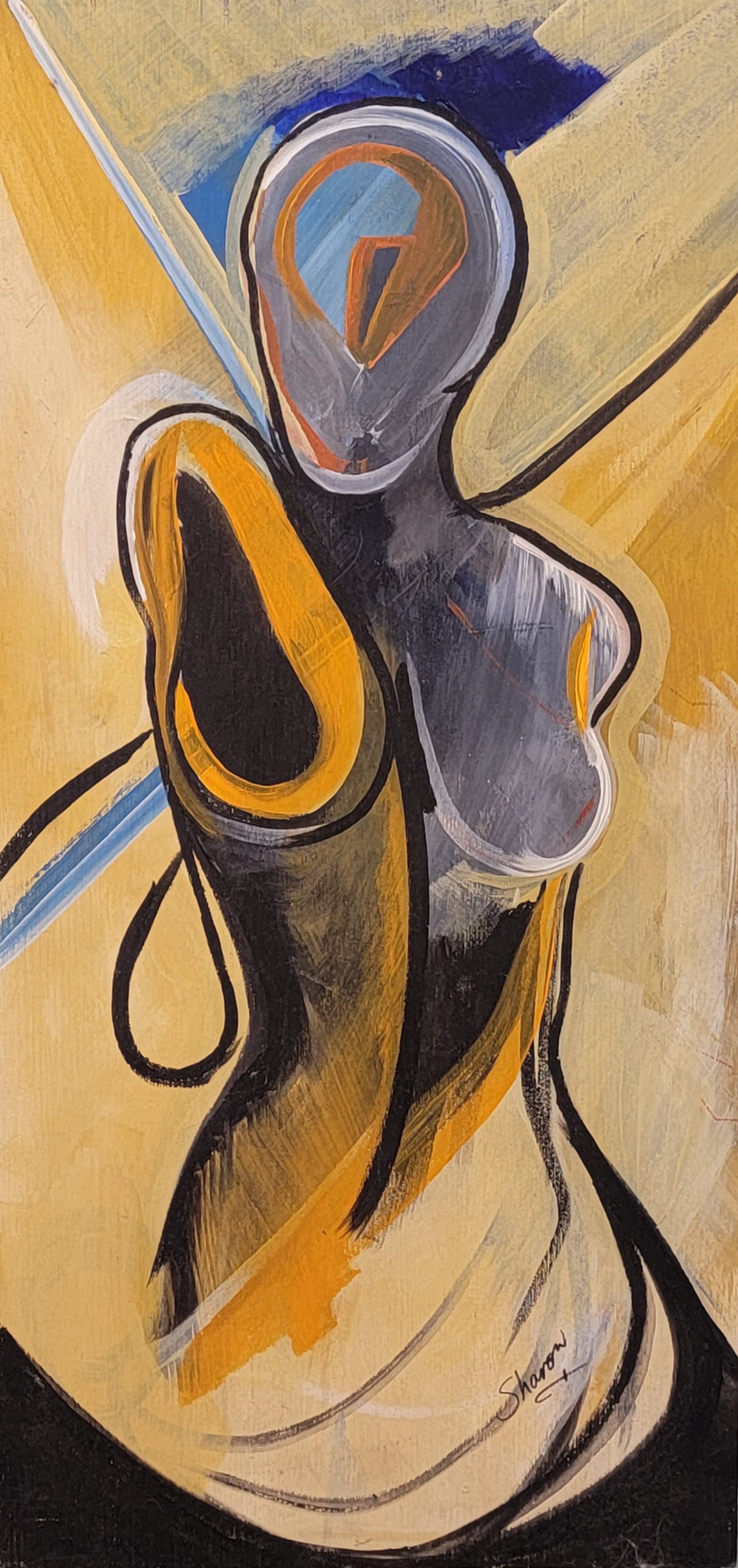I didn't set out to make protest art. Painting was a survival tool.
Looking at this painting now, I see how much resilience and fight I embedded in it. The chaos of the background, the fragmented figure pushing through the lines, the raw expression—it all reflects the constant battle—not one moment, but all the moments before it, all the times I’ve had to claw my way forward when life was pushing me down.
I felt crushed, but somehow, I still painted. Still created. Even in my lowest moments, art became my way of saying, I’m still here. That’s what this piece represents to me. Not just loss and pain, but the act of witnessing myself in it. It embodies the loss and the struggle to redefine myself amid turmoil, and protests the idea that adversity should define you, that being cast aside means you disappear, or that age or hardship limits your ability to create and move forward.
Layers of abstraction and motion reflect pain and survival—fighting against dissolution, asserting existence against an indifferent world—declaring,
I am here.
I am creating.
I am moving forward.
In contrast to the first painting, which felt like a raw expression of being crushed by circumstances, this one has an almost reconstructed quality.
The figure is still abstract, still shifting between presence and disappearance, but there’s a distinct sense of emerging rather than being swallowed. There’s a sense of motion, as if it's moving forward despite being fractured, an elegance, a quiet but undeniable power.
The partially deconstructed face reflects themes of identity, loss, and transformation. It suggests a struggle between being seen and being erased—a visual echo of experiences of rejection and reinvention. Warm yellows and oranges against the dark tones create an emotional tension. Blues add a sharp contrast, like a sliver of clarity or escape cutting through the composition. The feminine form and its expression—accentuated curves and strong lines—suggest vulnerability and defiance. It acknowledges pain but refuses to be diminished by it.
If the first painting represented a defining moment of feeling crushed, the second feels like a continuation of the battle—a moment of movement, even if the path forward isn’t entirely clear.





